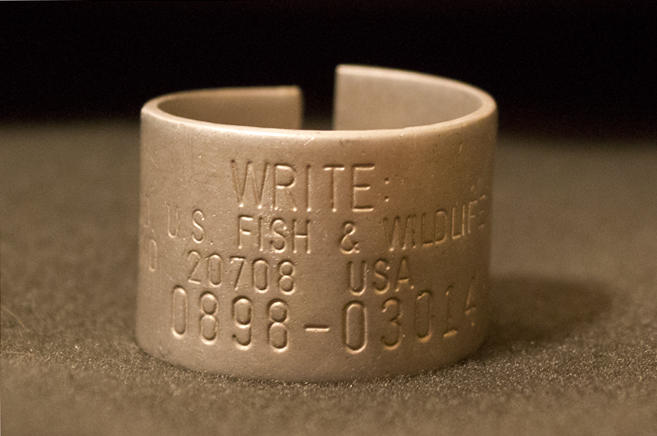Bird banding is an essential piece of collecting valuable data and understanding bird conservation. In this series, we’ll explore the necessity of bird banding practices and explore insights found through the shared data of our birds from North Carolina’s coast to the entire Atlantic Flyway.
Please welcome Coastal Biologist Lindsay Addison.
This band traveled for 18 years on the left leg of a Brown Pelican.

The pelican received the numbered metal band as a chick on July 11, 1997 on an island in Oregon Inlet when it was too young to fly. It was found dead on Beacon Island in Ocracoke Inlet this April when we were visiting the island to put up signs and check on early nesting. It was thin but had no apparent injuries. It’s possible this pelican died of old age.
As pelicans go, the pelican that wore this band was an older bird. A 60-year study of banded Brown Pelicans found that only about 30 percent of fledglings survive their first year and fewer than 2 percent survive beyond 10 years. However, they have the capacity to live for much longer.
The oldest known Brown Pelican was 43.
Pelicans tend to occupy the same colony sites year after year, if the site remains safe and productive. Pelicans also tend to nest at or near the site where they fledged. We only know where this pelican was born and where it died, but we can speculate that it nested in North Carolina, potentially at Oregon Inlet, possibly on the same island where it hatched, or maybe on Beacon Island about 75 miles to the south. We can also imagine that it wintered to the south, as is typical for pelicans, perhaps within North Carolina or perhaps in Florida or Georgia or even the Caribbean.
Metal bands like this pelican wore are not designed to be read in the field. Instead, they are typically resighted when the bird is recaptured or found dead. For this reason, it’s a good idea to check the legs carefully if you happen to come across a dead bird.
When you report a metal band number to the Bird Banding Lab, you will receive an email with information about your bird’s banding date and location.
For more information on Audubon NC’s bird banding program and more recorded species, click here.
Spotting and reporting banded birds is a great way to become a citizen scientist and contribute to our knowledge of birds on the coast. Always remember to give birds the space they need to thrive. Click here to learn more about Audubon’s Sharing Our Seas and Shores program.



